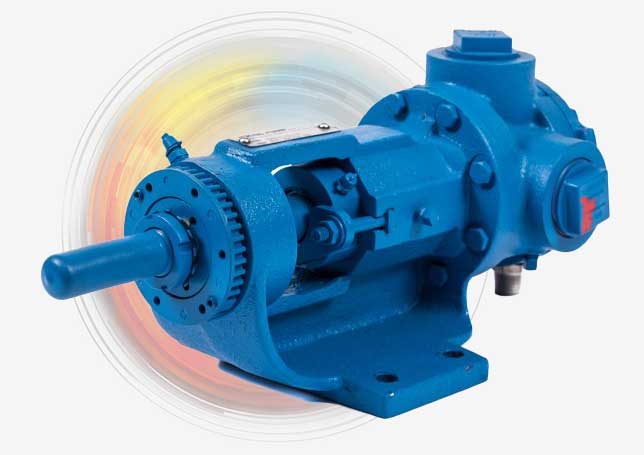
How to Select the Right Pump for Oil Circulating Temperature Control Equipment?
Often times it is hard to determine when to use a centrifugal pump or a positive displacement pump. Each has its own unique properties with respect to flow rate, pressure, viscosity, and efficiency. What is the difference between a positive displacement pump vs a centrifugal pump?
Pumping Styles
Centrifugal pumps produce flow by creating pressure. The pump transfers energy from the motor to the fluid by a spinning impeller. When the impeller is rotating, it results in an increase in fluid velocity and therefore pressure. A centrifugal pump thus creates a pressure differential from pump inlet to outlet that results in the creation of flow.
The positive displacement pump (PD pump) has two spinning rotors to displace a set amount of fluid per revolution from the inlet side to the discharge side of the pump. A PD pump thus creates flow based on displacing volume. However, a PD pump is not 100% volumetrically efficient due to clearances and gaps in the rotors and walls. The ratio of lost efficiency is called slip. Due to these precise parameters, a PD pump can be designed for a specific flow rate with high accuracy.
Flow Rate Versus Pressure
One of the main differences between the two pump styles is the flow rate at different pressures. As the curve on the right shows, a centrifugal pump will decrease flow rate as the pressure increases. However, a PD pump has almost a constant flow even when pressure increases.
Flow Rate Versus Viscosity
Another main difference between a centrifugal pump and a PD pump is the effect of viscosity on the flow rate. As the curve on the right shows, the centrifugal pump’s flow rate will decrease as the viscosity increases. Conversely, PD pumps deliver a higher flow as the viscosity increases. There is less slip in the pump. This is due to the fact that fluids with higher viscosity require more energy to move. The PD pump actually performs better because the fluid has a harder time slipping through the gaps and clearances near the rotors.
Pump Efficiency
Pump efficiency is the ratio of the power which is put in to run the pump compared the amount of power that is transferred to the fluid in the forms of flow and pressure.
Centrifugal pumps are designed to have the best efficiency at a designed pressure on the curve. However, if you operate the pump outside the designed range, the efficiency of the pump will suffer. Viscosity also plays a major role in determining the efficiency of a centrifugal pump. A highly viscous fluid will be more resistive to flow, and require a much higher pressure to achieve the same amount of flow as a less viscous fluid. Conversely, a very thin fluid will require less pressure and can be pumped more easily.
Positive displacement pumps are almost unaffected by an increase in pressure. A PD pump is most efficient with no pressure. As pressure increases, there is slightly more slip in the pump. Viscosity also plays a large part in the efficiency of a PD pump. As the fluid becomes more viscous, is gets harder for the fluid to slip between the clearances in the pump and increases the volumetrically efficiency. The efficiency of PD pumps is not as dramatically affected by changing conditions as centrifugal pumps are.
Summary:
There are many factors that play a role while deciding on a pump for your application.
If your Hot Oil Unit is dedicated to one application with limited changes to pressure and temperature, a centrifugal, magnetic drive pump might be the best option. No seal changes are needed with this pump style.
Delta T Systems recommends using a PD pump with our oil circulating temperature control units if:
- Guaranteed constant flow through various temperature ranges is needed
- The oil units will be transferred between applications with different pressure specifications to deliver constant flow over any pressure


